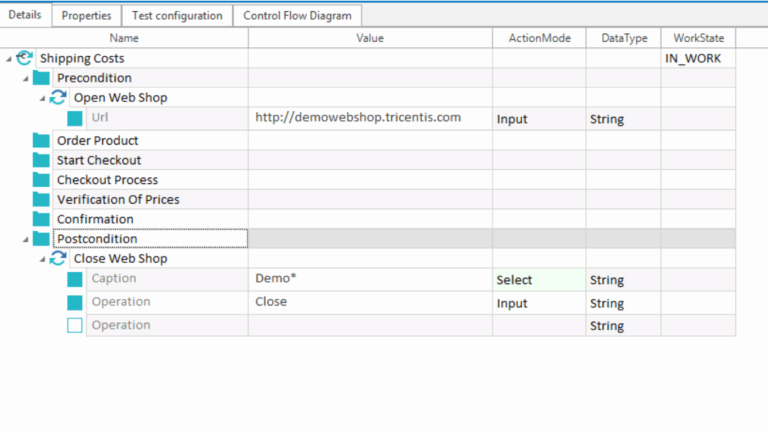In today’s competitive job market, mastering the right tools and technologies is key to building a successful career in data science. PyTorch, a leading deep learning framework, has gained immense popularity among data scientists and machine learning practitioners due to its flexibility and ease of use. Whether you’re preparing for a job PyTorch Interview Questions or planning to enhance your expertise, understanding PyTorch concepts is critical.
This blog post explores top PyTorch Interview Questions designed to help aspiring data scientists like you excel in interviews. As part of H2K Infosys’ Data Science using Python Online Training, we’ll also demonstrate how a structured learning approach can make mastering PyTorch straightforward and effective.
Why PyTorch?
PyTorch’s dynamic computational graph and intuitive design make it the framework of choice for research and production. Here are some key reasons to learn PyTorch:
- Dynamic Graphs: PyTorch supports dynamic computation graphs, enabling greater flexibility for complex models.
- Pythonic Syntax: The framework integrates seamlessly with Python, making it easier for developers to implement and debug code.
- Wide Adoption: Top companies like Facebook, Tesla, and Microsoft use PyTorch for deep learning tasks.
By enrolling in our Python Data Science Certification, you can gain hands-on experience in PyTorch and other essential tools used in the industry.
Top PyTorch Interview Questions
1. What is PyTorch, and why is it used in data science?
Answer: PyTorch is an open-source machine learning library based on Torch. It is primarily used for applications such as natural language processing (NLP) and computer vision. Data scientists prefer PyTorch for its dynamic computation graph, easy debugging, and strong community support.
Example Use Case: In image classification tasks, PyTorch enables developers to quickly prototype and deploy models with minimal effort.
2. Explain the difference between PyTorch and TensorFlow.
Answer:
| Feature | PyTorch | TensorFlow |
|---|---|---|
| Graph Creation | Dynamic computation graph | Static computation graph |
| Ease of Debugging | Easier debugging | Relatively complex debugging |
| Popularity | Academic research | Industry and production |
Real-World Insight: While TensorFlow is popular in production environments, PyTorch’s flexibility makes it the preferred choice in research and rapid prototyping.
3. What are tensors, and how are they used in PyTorch?
Answer: Tensors are multi-dimensional arrays similar to NumPy arrays but optimized for GPU acceleration. PyTorch tensors enable fast mathematical computations, making them ideal for deep learning.
Code Example:import torch
# Creating a tensor
tensor = torch.tensor([[1, 2], [3, 4]])
print(tensor)
# Performing operations
tensor_gpu = tensor.cuda() # Move tensor to GPU
print(tensor_gpu)4. What is Autograd in PyTorch?
Answer: Autograd is PyTorch’s automatic differentiation engine. It tracks operations performed on tensors and computes gradients automatically, simplifying backpropagation in neural networks.
Example:
import torch
x = torch.tensor(2.0, requires_grad=True)
y = x ** 2
y.backward() # Compute gradients
print(x.grad) # Output: 4.0
5. Explain the concept of PyTorch’s DataLoader.
Answer: The DataLoader class in PyTorch simplifies the process of loading datasets. It allows for batch processing, shuffling, and parallel data loading, ensuring efficient model training.
Code Example:
from torch.utils.data import DataLoader, TensorDataset
data = torch.tensor([[1.0], [2.0], [3.0]])
labels = torch.tensor([[2.0], [4.0], [6.0]])
dataset = TensorDataset(data, labels)
loader = DataLoader(dataset, batch_size=2, shuffle=True)
for batch in loader:
print(batch)6. What are PyTorch modules and how are they used?
Answer: Modules are building blocks of PyTorch’s neural networks. They encapsulate parameters, buffers, and submodules, simplifying model creation and training.
Example:
import torch.nn as nn
class SimpleModel(nn.Module):
def init(self):
super(SimpleModel, self).init()
self.linear = nn.Linear(10, 1)
def forward(self, x):
return self.linear(x)
model = SimpleModel()
print(model)
7. What is the purpose of the nn.Sequential class in PyTorch?
Answer: nn.Sequential is a container module in PyTorch used to stack layers in a linear sequence. It simplifies the creation of straightforward feedforward neural networks.
Example:
import torch.nn as nn
model = nn.Sequential(
nn.Linear(10, 20),
nn.ReLU(),
nn.Linear(20, 1)
)
print(model)8. How do you save and load a trained PyTorch model?
Answer: PyTorch provides torch.save and torch.load methods to save and load models.
Example:
# Save model
torch.save(model.state_dict(), 'model.pth')
# Load model
model = SimpleModel()
model.load_state_dict(torch.load('model.pth'))9. What is the difference between torch.nn and torch.nn.functional?
Answer:
torch.nn: Contains classes that include learnable parameters, such asnn.Linear.torch.nn.functional: Provides functional versions of operations without parameters, such asF.relu.
Example:
import torch.nn.functional as F
output = F.relu(input_tensor)10. How do you implement dropout in PyTorch?
Answer: Dropout is implemented using nn.Dropout, which randomly zeroes out elements of a tensor to prevent overfitting during training.
Example:
import torch.nn as nn
dropout = nn.Dropout(p=0.5)
output = dropout(input_tensor)11. What are optimizers in PyTorch, and how are they used?
Answer: Optimizers in PyTorch, such as torch.optim.SGD or torch.optim.Adam, are used to update the parameters of a model based on the computed gradients. They play a key role in minimizing the loss function.
Example:
import torch.optim as optim
optimizer = optim.SGD(model.parameters(), lr=0.01)
loss.backward()
optimizer.step()12. What is the purpose of the torchvision library in PyTorch?
Answer: torchvision is a library that provides datasets, transforms, and pre-trained models for computer vision tasks. It simplifies data preprocessing and model implementation.
Example:
from torchvision import datasets, transforms
transform = transforms.Compose([
transforms.ToTensor(),
transforms.Normalize((0.5,), (0.5,))
])
dataset = datasets.MNIST(root='./data', download=True, transform=transform)13. How can you monitor and visualize training progress in PyTorch?
Answer: Libraries like TensorBoard or Matplotlib can be used to monitor and visualize training metrics such as loss and accuracy.
Example:
from torch.utils.tensorboard import SummaryWriter
writer = SummaryWriter()
for epoch in range(10):
writer.add_scalar('Loss/train', loss, epoch)
writer.close()14. What is the purpose of the requires_grad attribute in PyTorch tensors?
Answer: The requires_grad attribute determines whether PyTorch should calculate gradients for a tensor during backpropagation. It is typically set to True for learnable parameters.
15. What is a pre-trained model in PyTorch?
Answer: A pre-trained model is a neural network trained on a large dataset, such as ImageNet. These models can be fine-tuned for specific tasks, saving time and computational resources.
Example:
from torchvision import models
model = models.resnet18(pretrained=True)Tips for Cracking PyTorch Interviews
- Master Core Concepts: Understand tensors, autograd, and neural network modules.
- Practice Real-World Problems: Work on projects like image classification, NLP, and time series forecasting.
- Stay Updated: Follow PyTorch’s official blog and community forums for the latest updates and use cases.
- Enroll in a Comprehensive Course: H2K Infosys’ Data Science Course Online offers practical training with real-world examples and hands-on projects.
Conclusion
The PyTorch Interview Questions is an indispensable tool for modern data scientists, offering unparalleled flexibility and power. By mastering PyTorch Interview Questions through structured learning and consistent practice, you can enhance your data science skills and ace your interviews.
Are you ready to take the next step in your data science career? Enroll in H2K Infosys’ Python Data Science Certification today and gain the confidence to tackle real-world challenges. Start your journey toward becoming a successful data scientist!
Key Takeaways
- PyTorch’s dynamic computation graph makes it ideal for research and rapid prototyping.
- Mastering tensors, autograd, and modules is essential for interview success.
- Practical training, like H2K Infosys’ Data Science Course, is crucial for career advancement.




























